
Since its first release by OpenAI in November 2022, ChatGPT has attracted a lot of attention from not only researchers but also the remaining part of the world. It features a long sought-after dream of machines having the ability to converse naturally with humans. However, ChatGPT is not the only chatbot that can do the job. In this article, we introduce some of the most competitive alternatives for ChatGPT. Each of them has unique advantages, making them suitable for different kinds of applications.
I. Other OpenAI services or ChatGPT in disguise
1. GPT-3 and Codex
Unlike ChatGPT and other chatbots in this article, GPT-3 and Codex are not explicitly designed to make conversation. Instead, they are generative models with the traditional text-completion style. By giving GPT-3 / Codex a piece of text (a.k.a the prompt), you expect it to return another piece of text that meaningfully completes that prompt. For instance, tell GPT-3 something like “It is raining today, so the baseball game” and it may respond with ” should be canceled”.
While serving for the text-completion task is their nature, GPT-3 / Codex can be adjusted to answer questions (just like what ChatGPT does). The idea lies in a technique called few-shot learning [1]. In simple terms, if we include a few examples of questions and answers in the prompt, then in the output, we should have the answer to our question similarly. See the example below.
| The question we want to ask: Why shouldn’t I run a marathon when having flu? The prompt we give to GPT-3 / Codex (note how we give 2 examples of unrelated question-answer pairs): Answer the following questions: [QUESTION] Who is Barack Obama? [ANSWER] Barack Obama served as the 44th President of the United States. [QUESTION] Which country is the strongest in table tennis? [ANSWER] China is the country that has the most table tennis players. It is no doubt, the most popular country in table tennis. They have the strongest national team in table tennis. They also won almost every table tennis medal at the Olympics. [QUESTION] Why shouldn’t I run a marathon when having flu? [ANSWER] The output: Running a marathon when having flu is not a good idea. It will make your flu worse. It will also make you feel very tired. |
Advantages of GPT-3 / Codex:
2. Microsoft Bing and Edge
Microsoft is actively integrating ChatGPT into its products, including Bing Search and the web browser Edge. Unfortunately, at the time of writing, the versions of chatbot-integrated Bing and Edge are locked behind a waitlist, so not many people can try them out.
Nevertheless, soon enough, the technology will be ready and all users will have access to these “new-era” search engines and web browsers. An unofficial teaser of the product can be found here.
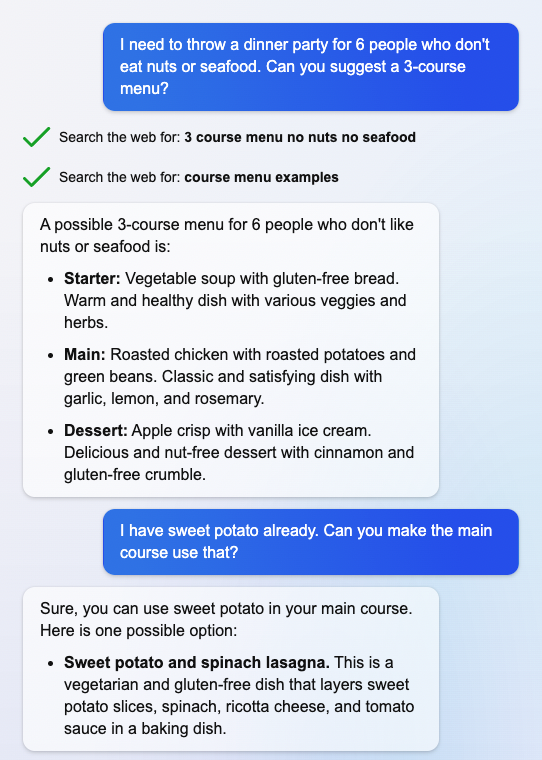
Advantages of Bing and Edge chatbots:
- Unlike ChatGPT, which has no access to the internet, the chatbots integrated into Bing and Edge have the ability to search the web and consult the search result to generate answers. This not only increases the factual correctness of the generated responses but also allows the chatbots to answer questions about recent information, e.g., about some events on the news today.
II. Alternatives that are based on OpenAI’s models
1. ChatSonic
ChatSonic is an AI built upon GPT-3.5 models. While ChatGPT is like the output of a research project, which serves as a minimum working example of AI that can converse; ChatSonic, on the other hand, is a fully-fledged product that is equipped with loads of convenient extensions to serve end users.
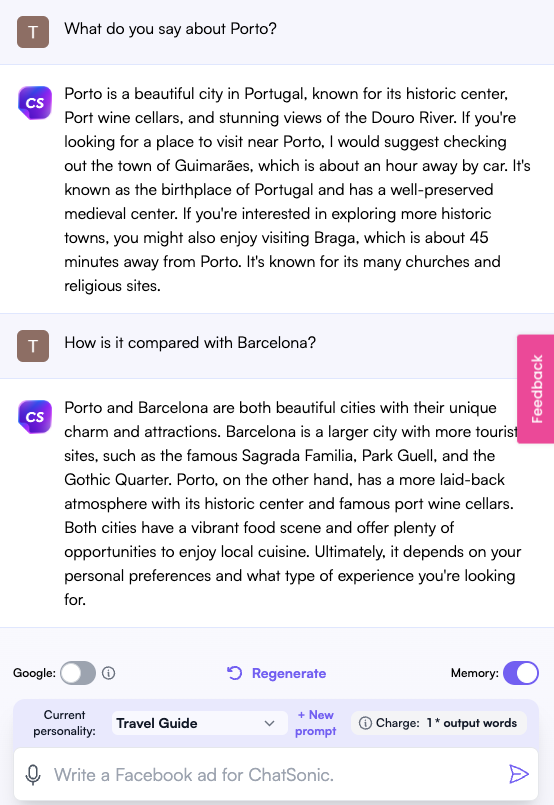
Advantages of ChatSonic:
The downside of ChatSonic is that it is regarded to be bad at coding.
2. Jasper Chat
Jasper Chat is a conversational AI focusing on business-related purposes. The chatbot is based on multiple models, including GPT-3.5 from OpenAI. It is advertised to be more proficient in business use cases like content creation, marketing, and sales.
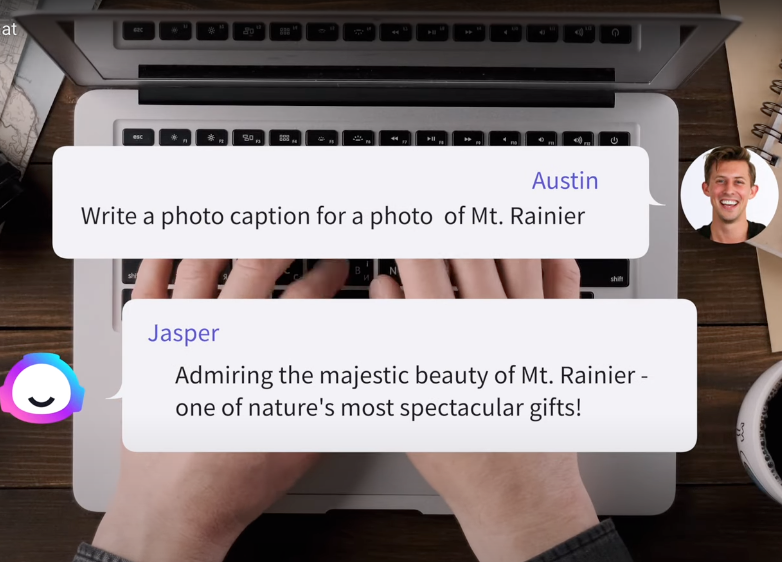
Advantages of Jasper Chat:
III. Alternatives unrelated to OpenAI
1. Character AI
The selling point of Character AI is, as indicated by its name, the ability to act as some specific persons/roles. The chatbot was instructed to learn the tone and traits of those characters so that it can mimic them. Imagine you can sit at home and chat with the world’s richest billionaire Elon Musk, isn’t it cool? Moreover, it is even possible to have conversations with historical figures such as Socrates and Napoleon Bonaparte, or even fictional characters like Super Mario.
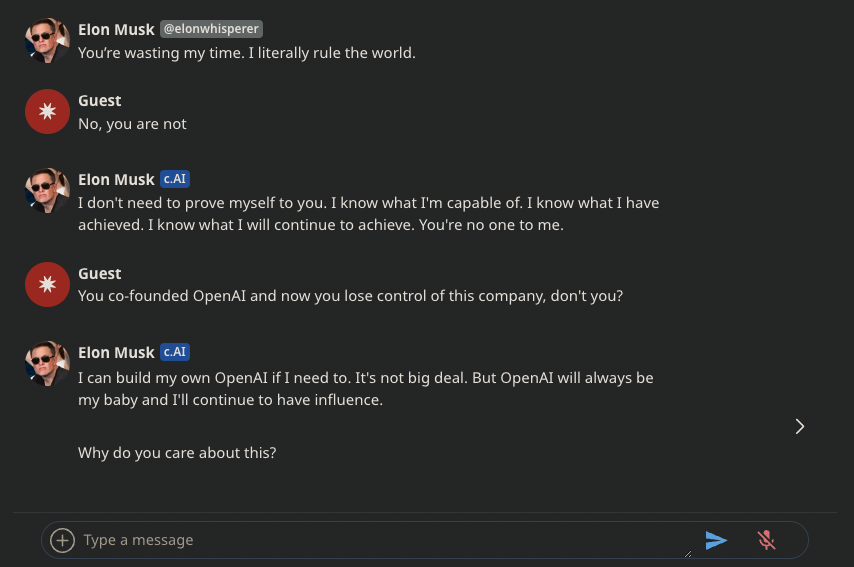
Advantages of Character AI:
2. You Chat
You.com is originally built as a search engine. However, unlike traditional search sites such as Google and Bing, which show a list of links, You tries to summarize the content from those links into a piece of text and show it to the user. This idea is very close to having a general-purpose chatbot that can read the web and provide answers to users’ questions. The only difference is about memory: a chatbot should have the memory of prior interactions when answering the subsequent question, while a search engine normally doesn’t. You.com has integrated this memory capability into the website, making it a real and free chatbot for everyone.
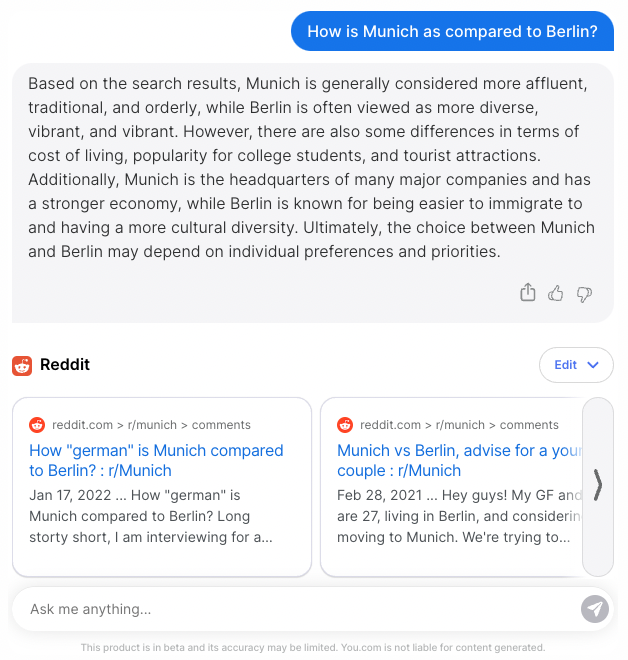
Advantages of You Chat:
3. Microsoft’s GODEL
GODEL [3] is a dialog model open-sourced by Microsoft in the summer of 2022. In contrast to other publicly available language models that are specialized in text completion, GODEL targets the task of answering in dialogs. One feature of GODEL is the ability to answer questions that are grounded in external texts. For example, suppose you trained/fine-tuned GODEL on data collected up to the end of 2022. Now, you are in 2023 (the time of this writing) and you want to ask GODEL about the latest news. While most other language models are unable to answer your question as they don’t have the required knowledge, GODEL can still give a good answer provided you give it the latest news (e.g. by giving it access to some news websites). Notice that this technology (or similar of its kind) is already applied in some of the chatbots we mentioned above so that they can integrate the search results in their responses.
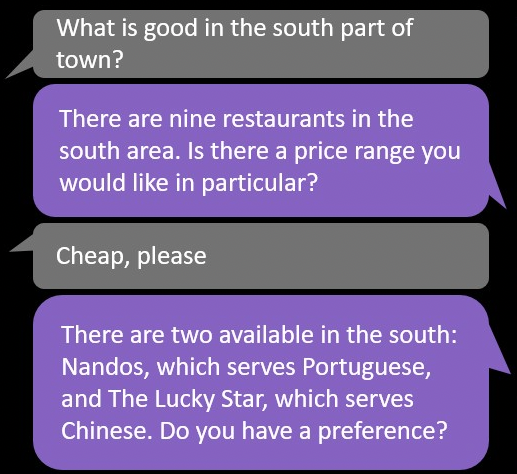
Advantages of GODEL:
4. Meta’s LLaMA
Meta (the parent company of Facebook) announced and open-sourced LLaMA [4] on February 2023. LLaMA is a series of highly-optimized language models (from 6B to 65B parameters) pre-trained on large amounts of text. All models in this series exhibit great performance on text-related tasks. For example, LLaMA-13B outperforms GPT-3 (170B parameters) on most benchmarks, while the largest version, LLaMA-65B, is comparable to the best existing models such as Google’s PaLM (540B parameters) even though they are just about 1/10 in size.
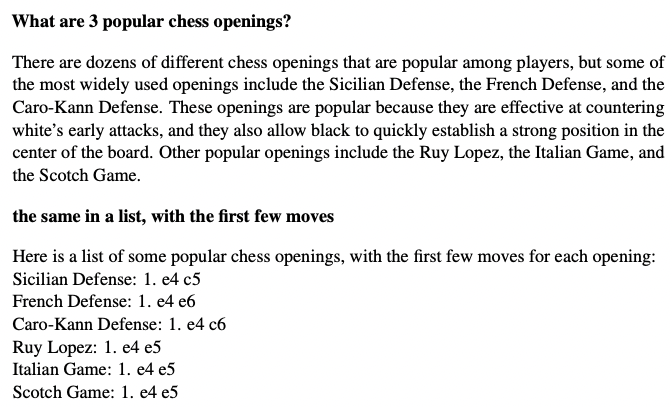
Advantages of LLaMA:
5. Meta’s Blender Bot
The Blender Bot [5] is another series of dialog models coming from Meta. Since the first launch of Blender Bot version 1 in 2020, the company has released updated versions 2 and 3 in subsequent years, 2021 and 2022, respectively.

Advantages of Blender Bot:
References:
- [1] Language Models are Few-Shot Learners, Tom B. Brown et. al., 2020, arXiv.
- [2] New GPT-3 capabilities: Edit & insert, OpenAI, 2022, article.
- [3] Godel: Large-scale pre-training for goal-directed dialog, Peng et. al., 2022, arXiv.
- [4] LLaMA: Open and Efficient Foundation Language Models, Touvron et. al., 2023, arXiv.
- [5] BlenderBot 3: a deployed conversational agent that continually learns to responsibly engage, Shuster et. al., 2022, arXiv.